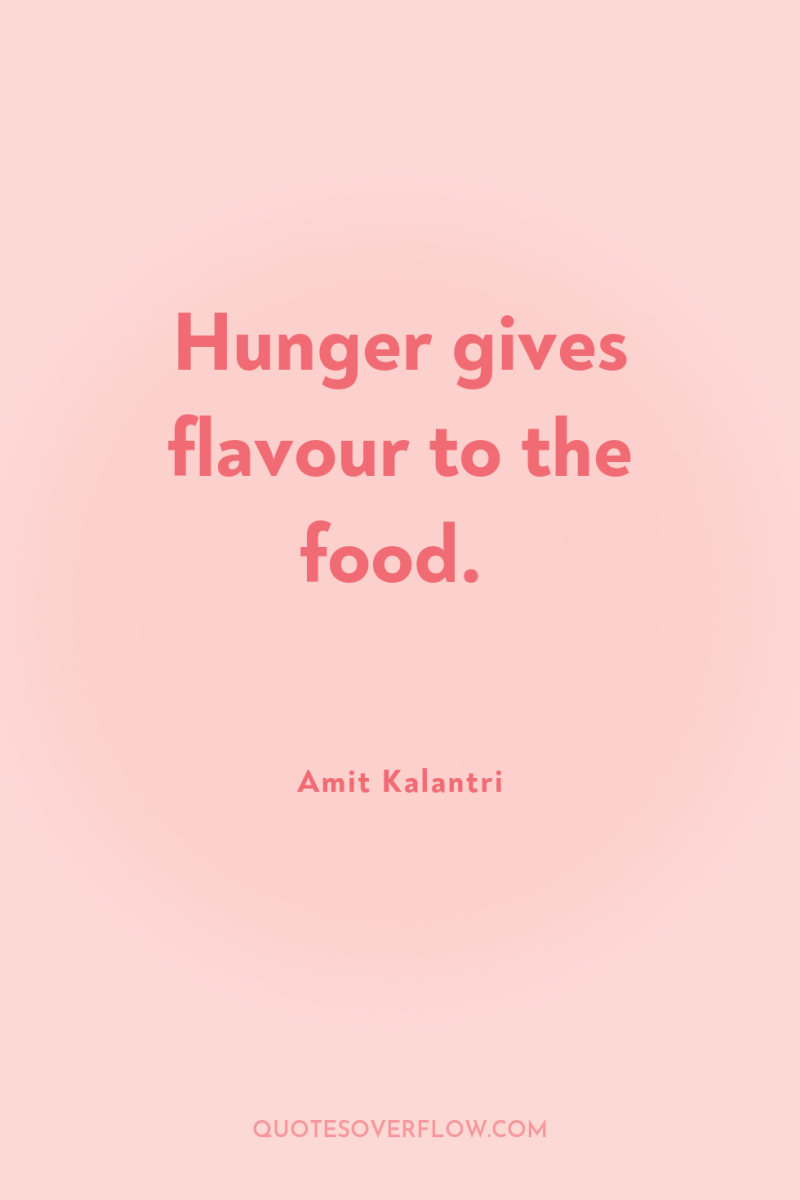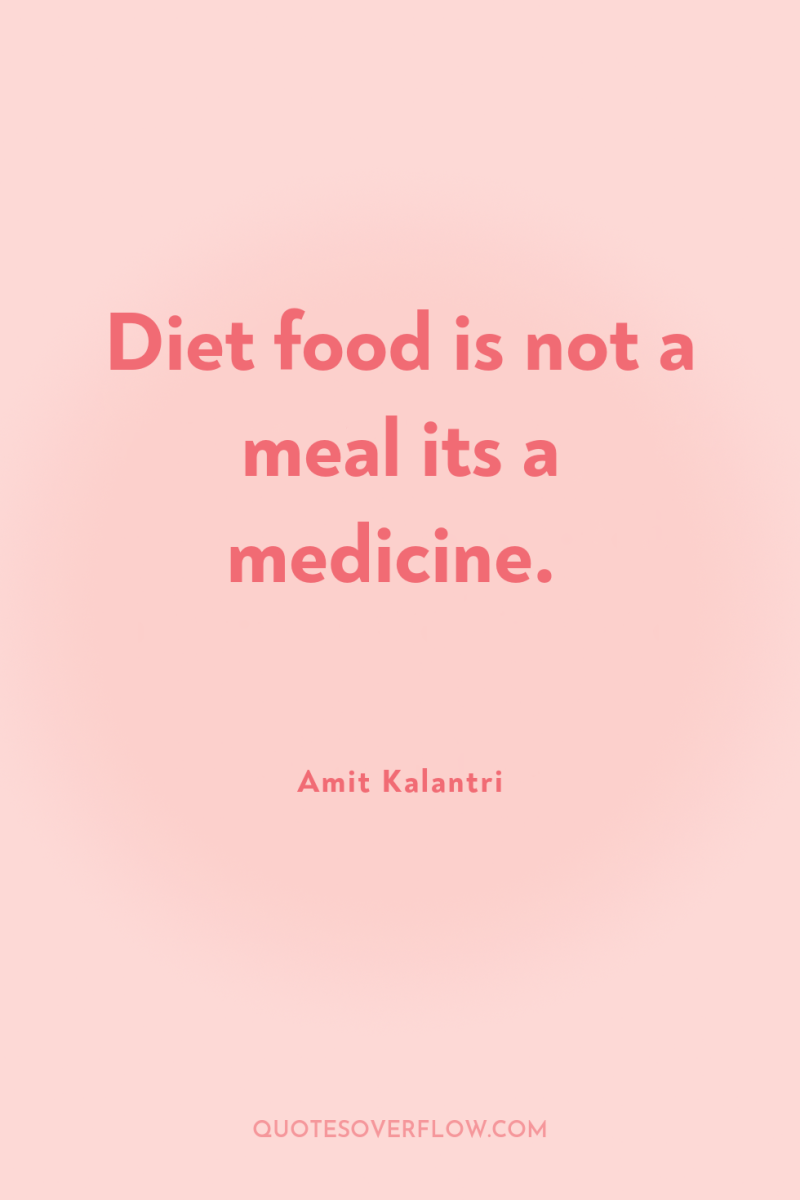
1
Hunger gives flavour to the food.Amit Kalantri

2
Diet food is not a meal its a medicine.Amit Kalantri

3
All worries are less with wine.Amit Kalantri

4
Some people when they see cheese, chocolate or cake they don't think of calories.Amit Kalantri

5
The salt is to the food, what soul is to the body.Amit Kalantri

6
A good food is mouthwatering when you see it and finger licking when you eat it.Amit Kalantri

7
We love our mother because she cares and also because she cooks.Amit Kalantri
8
The mind likes a strange idea as little as the body likes a strange protein and resists it with similar energy. It would not perhaps be too fanciful to say that a new idea is the most quickly acting antigen known to science. If we watch ourselves honestly we shall often find that we have begun to argue against a new idea even before it has been completely stated.Wilfred Trotter
9
Advocacy of leaf protein as a human food is based on the undisputed fact that forage crops (such as lucerne) give a greater yield of protein than other types of crops. Even with conventional food crops there is more protein in the leafy parts than in the seeds or tubs that are usually harvested.Norman Pirie
10
Whether through grains, beans, or even fruit, there’s plenty of protein in a plant-strong diet. We only need 5-8% of our calories from protein, and since protein is the one macronutrient that we can’t store, when you get above 15% it either stores as fat or we excrete it.Rip Esselstyn
11
In describing a protein it is now common to distinguish the primary, secondary and tertiary structures. The primary structure is simply the order, or sequence, of the amino-acid residues along the polypeptide chains. This was first determined by [Frederick] Sanger using chemical techniques for the protein insulin, and has since been elucidated for a number of peptides and, in part, for one or two other small proteins. The secondary structure is the type of folding, coiling or puckering adopted by the polypeptide chain: the a-helix structure and the pleated sheet are examples. Secondary structure has been assigned in broad outline to a number of librous proteins such as silk, keratin and collagen; but we are ignorant of the nature of the secondary structure of any globular protein. True, there is suggestive evidence, though as yet no proof, that a-helices occur in globular proteins, to an extent which is difficult to gauge quantitatively in any particular case. The tertiary structure is the way in which the folded or coiled polypeptide chains are disposed to form the protein molecule as a three-dimensional object, in space. The chemical and physical properties of a protein cannot be fully interpreted until all three levels of structure are understood, for these properties depend on the spatial relationships between the amino-acids, and these in turn depend on the tertiary and secondary structures as much as on the primary. Only X-ray diffraction methods seem capable, even in principle, of unravelling the tertiary and secondary structures.[ Co-author with G. Bodo, H. M. Dintzis, R. G. Parrish, H. Wyckoff, and D. C. Phillips] .John Kendrew
12
Although protein deficiency is widespread in poverty-stricken communities and in some nonindustrialized countries, most people in industrialized countries face the opposite problem–protein excess. The RDA for a 70-kilogram (154-pound) person is 56 grams; however, the average American man consumes approximately 100 grams of protein daily, and the average woman about 70 grams. Many meat-loving Americans eat far more protein. Some research suggests that high protein intake contributes to risk for heart disease, cancer, and osteoporosis. However, because high protein intake often goes hand-in-hand with high intakes of saturated fat and cholesterol, the independent effects of high protein intake are difficult to determine.Melissa Bernstein